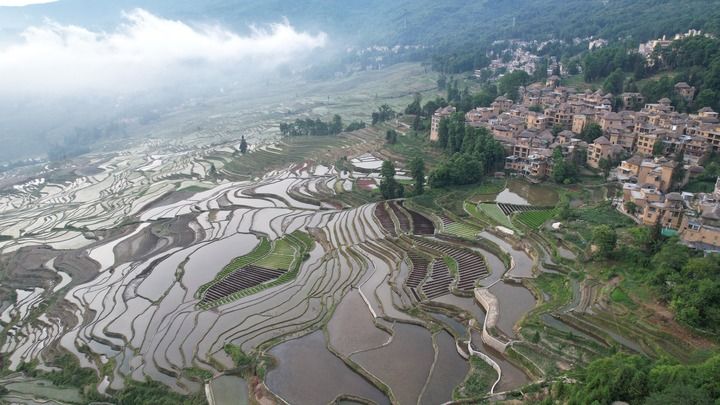DepthReading
Legacy etched in terraces serves modern purpose

KUNMING — Amid the rice terraces in Dayutang village in Southwest China's Yunnan province, Li Zhengfu continues an agricultural practice that has been handed down among the local Hani people for more than 1,000 years.
Rice cultivation, fish farming and duck rearing — all in the awe-inspiring terraces. It is a way of life that weaves a story of ecological harmony, traditional wisdom, and modern innovation.
The Cultural Landscape of Honghe Hani Rice Terraces was inscribed on the UNESCO World Heritage List in 2013. The terraces cascade down the slopes of the towering Ailao Mountains to the banks of the Honghe River.
Over the past 1,300 years, the Hani people have developed a complex system of channels to bring water from the forested mountaintops to the terraces. This forms a symbiotic agricultural ecosystem of forests, villages, terraces and rivers.
Li's fields are nestled in the core region of these terraces. However, the rugged slopes of the Ailao Mountains lack large swaths of flat land, making modern agricultural equipment impractical for these small terraces. Consequently, the income derived from the terraces remained limited for many years.
Despite these challenges, Li remained steadfast. "The terraces are my roots," he says. "We can lose anything, but not the fields."
To protect the terraces while improving income, Li leased his land to Yue Shao, a local entrepreneur. Yue worked to uphold and innovate Hani's traditional ecological farming model, combining rice cultivation, fish farming and duck rearing.
The innovative step, deeply rooted in tradition, boosted the income from each acre of land. The average disposable income of farmers in the heritage region has increased from 3,928 yuan ($544.8) in 2013 to 12,502 yuan.
As the terraces flourished, so did the popularity of products like red rice, paddy fish and duck eggs. Coupled with the allure of Hani's ancient songs, traditional farming methods and ethnic festivals, the terraces have attracted tourists from around the globe.
Azheke village in Yuanyang county is a Hani tourism hot spot with its native ecology and culture, which is deemed a living museum of Hani dwellings. Traditional Hani houses, recognized by their thatched roofs and umbrella-like wooden structure, known locally as "mushroom houses", have been preserved and passed down over the course of 1,000 years.
However, traditional Hani villages like Azheke once faced challenges. Many local young people left for jobs in cities, leading to messy and rundown village environments. Homes fell into disrepair, and the continuity of traditional culture was in jeopardy.
In response to these challenges, in 2018, a team from Sun Yat-sen University, invited by the local government, developed a plan that included villagers as shareholders in a local tourism development firm. Through dividends, the company encourages villagers to conserve traditional houses, cultivate terraces, and retain their village household registration.
Thanks to these efforts, traditional dwellings and villages have retained their original characteristics, charm, and nostalgic appeal.
Today, the changes to the traditional Hani villages are evident. "Now, many villagers know how to use computers, and some can even speak some basic English to communicate with foreign tourists," says Liu Yang, village chief of Azheke.
Category: English
DepthReading
Key words:
